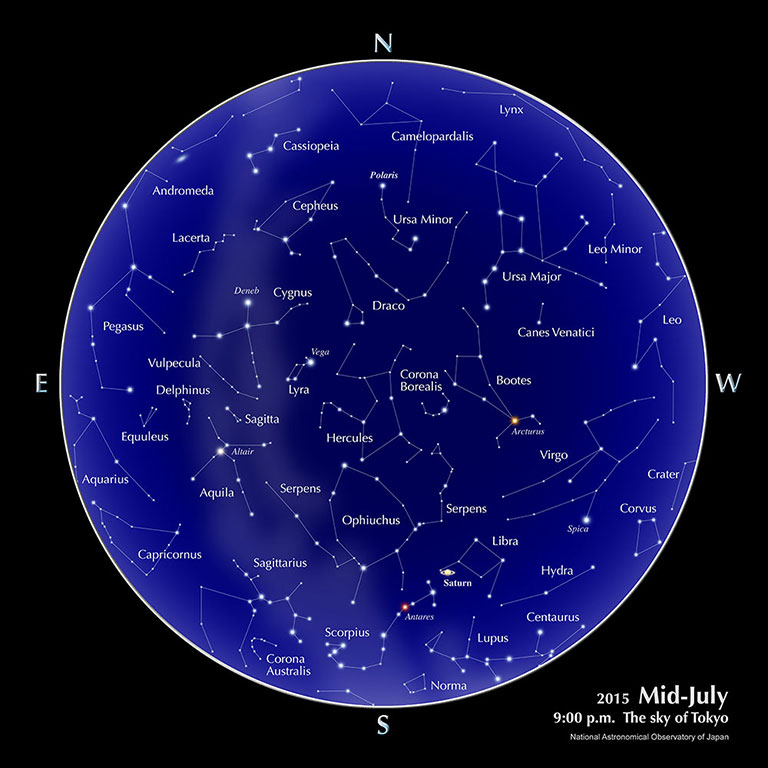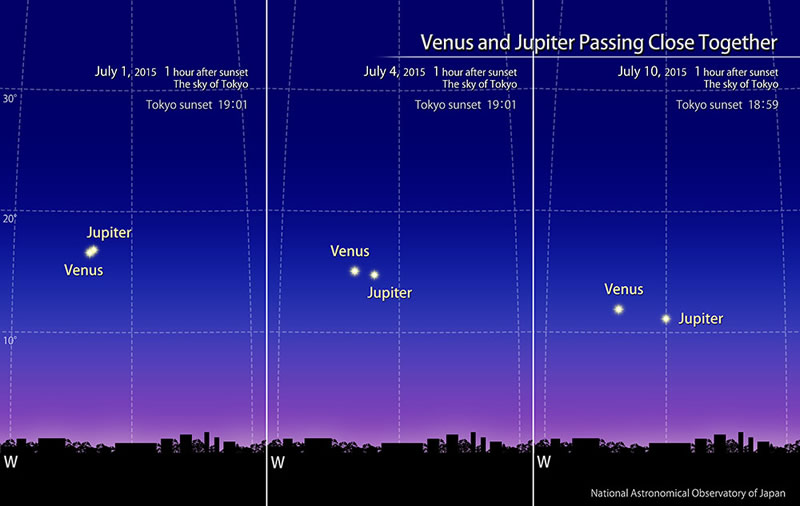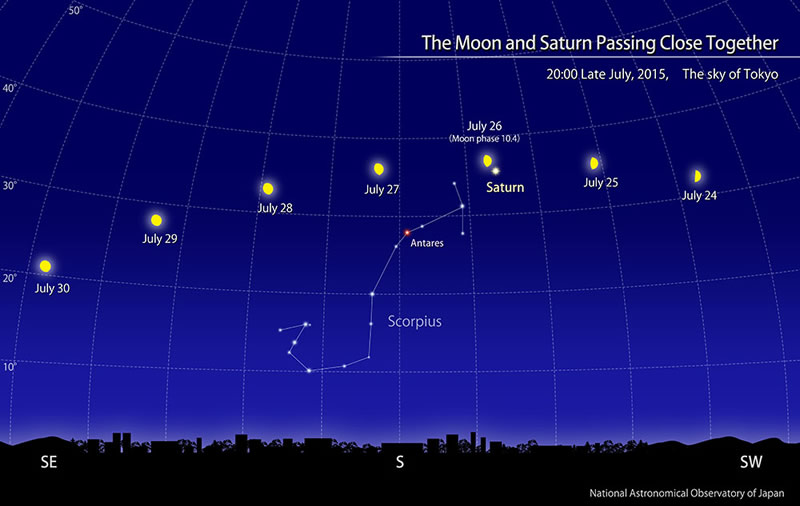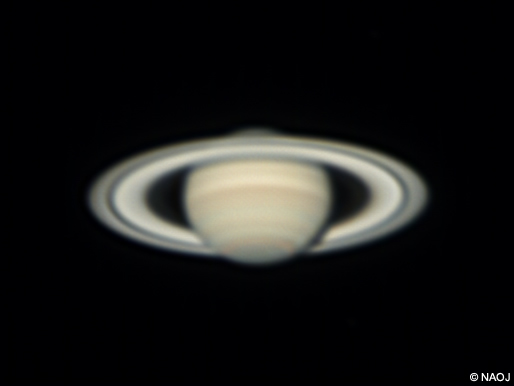July, 2015
Index
The sky of Tokyo

Calendar (July)
| 2 | Full Moon |
| 7 | Earth passes aphelion |
| 9 | Last Quarter |
| 10 | Venus is maximum magnitude of light (luminosity) |
| 16 | New Moon |
| 20 | Marine Day [Umi no hi] (national holiday) |
| 23 | Venus at stationary point |
| 24 | First Quarter / Mercury at superior conjunction |
| 27 | Uranus at stationary point |
| 30 | Peak of Delta Aquarids Meteor Shower (There is no effect of moonlight during whole night) |
| 31 | Full Moon |
The posted peak day and time of meteor showers is based on the prediction of IMO(International Meteor Organization).
Planets
- Mercury
- At the beginning of the month, Mercury can be found low in the eastern sky just before sunrise. After that, its elevation gradually decreases. In the latter half of the month, it appears close to the Sun, making it difficult to observe.
- Venus
- Look in the western sky after sunset. Venus attains its maximum luminosity on the 10th. Its elevation gradually decreases, making it difficult to observe at the end of the month. But thanks to its brightness, it stands-out well even when low in the sky. The brightness is about - 4.4 magnitude or -4.3 magnitude. Around its maximum brightest, Venus is -4.5 magnitude.
- Mars
- Mars appears close to the Sun and is not suitable for observations. At the end of the month, it appears low in the eastern sky just before sunrise, but it is difficult to observe.
- Jupiter
- Jupiter is located in the constellation Leo. Look for it in the western sky after sunset. Its elevation gradually decreases. By the end of the month it is low in the sky and difficult to observe. Its brightness is -1.8 magnitude to -1.7 magnitude.
- Suturn
- This is a chance to see Saturn, located in the constellation Libra, by looking in the southern sky around 20:00. The brightness is 0.2 magnitude to 0.4 magnitude.
Source: Ephemeris Computation Office, NAOJ
With the “Sky Viewer” you can easily explore the appearance of a typical urban night sky (planets and constellations are visible).The Celestial Phenomenasection of the glossary explains the planetary phenomena terms: greatest elongation, opposition, conjunction, stationary, etc.
Topics
Venus and Jupiter Passing Close Together

The 2 bright planets Venus and Jupiter are visible in the western sky after sunset. The apparent positions of Venus and Jupiter draw close together starting from the end of June, but they are the closest on July 1. At that time, the apparent separation between them is less than the apparent size of the Moon. After that, they move apart again while the elevations of both planets decrease day by day. But for the first half of July you can enjoy the sight of them lined up in the evening sky. Additionally, Venus reaches its maximum brightness, -4.5 magnitude, on the 10th. By all means, please enjoy these 2 planets shining brightly in the evening sky.
The Optimal Time to See Saturn; the Moon and Saturn Passing Close Together

In July, Saturn approaches its best time for observation. Saturn can be seen in the southern sky around the time it gets dark after sunset. It sets into the west sky around midnight. If you turn a telescope to Saturn, you can enjoy Saturn itself and its impressive, greatly-inclined ring.
On the 26th, the 10.4 day old Moon approaches Saturn, drawing the eye in the night sky.

Date of Photograph: 24:24 June 27, 2014 (i.e. 12:24 the next morning)
Photograph by: Ishigakijima Astronomical Observatory